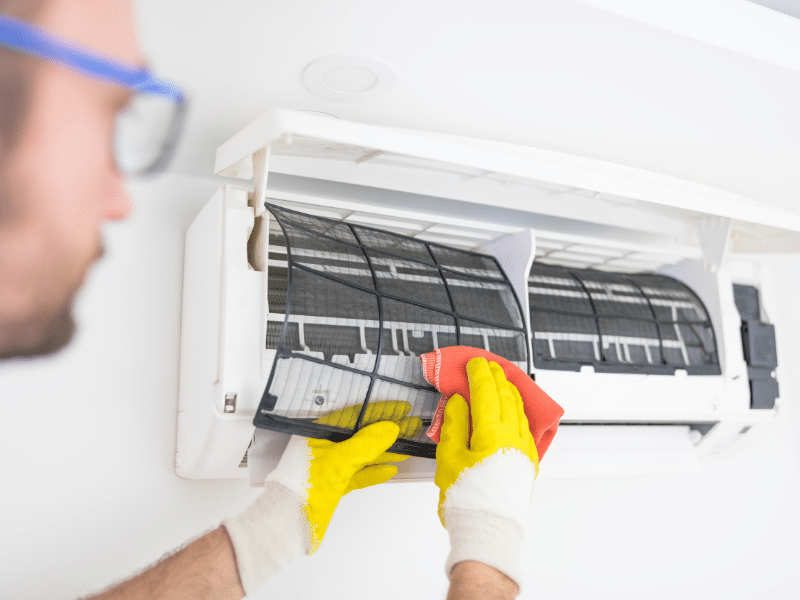Signs of mold growth in the air conditioner
Mold in your AC unit and vents isn’t usually visible, but as it grows, the spread of mold spores can cause a musty odor and allergies. Mold is a common problem in warm and moist areas that do not get sufficient light. If your air conditioner is not maintained properly, it can become prone to mold growth. When organic material from dirt and dust gets deposited in the filter, it can turn into a breeding ground for mold. Some of the important signs of mold growth in your air conditioner are:
Visible mold growth
You may see mold growth on the AC, vents, and other parts of your home. You may also see black or dark-colored dust around the air vents. Open the grates, remove the air filter, and look for green, black, or white patches. If you suspect mold growth in your AC, you can use a flashlight to check it.
Even if there are no visible signs, you should check the air conditioner for mold growth every time you replace the air filters. While you can easily wipe the mold off, it can return unless a professional thoroughly cleans it. The professionals will also identify the reason behind mold growth and rectify it to prevent mold growth in the future.
Allergy flare-ups
Mold growth in the air conditioner can trigger allergies in people who are sensitive to dust and other air-borne particulate matter. If people in the house are experiencing symptoms of allergies frequently, it could be a sign of mold growth.
Some common symptoms include respiratory problems, coughing, sneezing, wheezing, and red itchy eyes. Allergies can also cause symptoms such as fatigue, nausea, and dizziness. In order to maintain good indoor air quality, you should maintain cleanliness in your home and ensure proper air conditioner maintenance.
Musty Odors
A musty odor is the most common sign of mold growth in your air conditioning system. Mold has a distinctive odor similar to the order of decaying wood or wet socks. It is stale, musty, and earthy.
If your home does not smell fresh and instead smells old and unpleasant, it could be a sign of mold growth within the home’s air ducts, especially if the odor is more noticeable when the AC is turned on. If there is mold growth inside the air ducts, the only effective way to get rid of it is professional duct cleaning.
How to prevent mold growth in ACs?
- Replace air filters regularly because the accumulation of dirt and dust can promote mold growth.
- Regularly clean your air ducts using a vacuum cleaner or wipe them clean
- Ensure proper drainage of the condensation line
- Make sure the air returns and grates are not blocked
- Keep an eye on excessive moisture buildup
- Inspect drains, intake vents, drip pans, and air vents a regular basis
What to do if you suspect mold growth in your AC?
If you find mold growing in your air conditioning system, do not panic. Make sure you clean the mold completely before you run the air conditioner to prevent mold spores from circulating inside your home.
It is best to call an HVAC technician to carry out thorough duct cleaning and service of your air conditioner. This will help eliminate the mold entirely from your air conditioning system and prevent its return.
If you notice signs of molds in your air conditioning, contact our team immediately. We will inspect your AC and take care of the mold.
